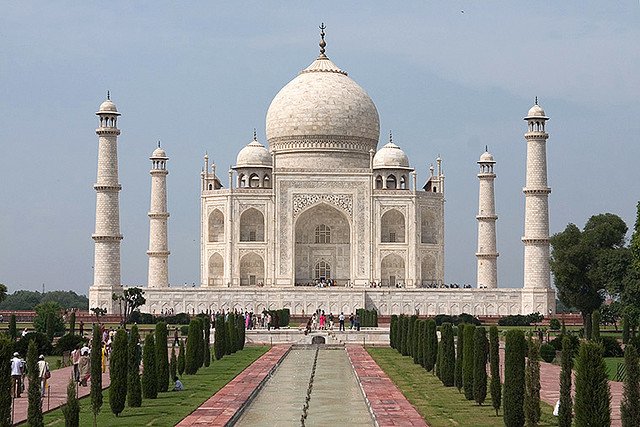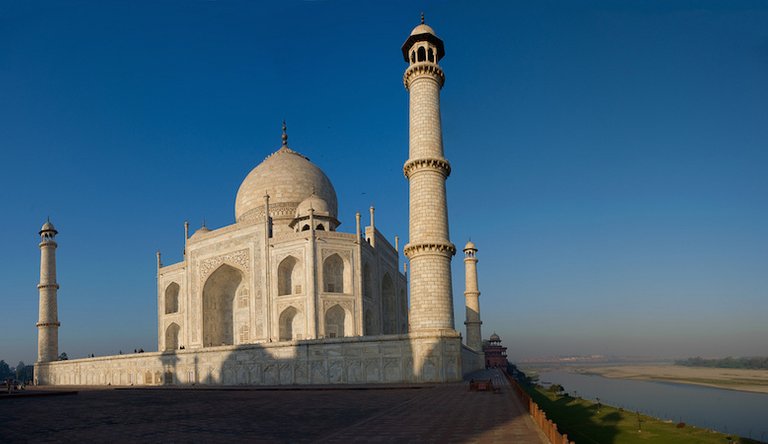
Taj Mahal, Agra, India, 1632-53, photo: Mathew Knott (CC BY-NC-SA 2.0)
Shah Jahan was the fifth ruler of the Mughal dynasty. During his third regnal year, his favorite wife, known as Mumtaz Mahal, died due to complications arising from the birth of their fourteenth child. Deeply saddened, the emperor started planning the construction of a suitable, permanent resting place for his beloved wife almost immediately. The result of his efforts and resources was the creation of what was called the Luminous Tomb in contemporary Mughal texts and is what the world knows today as the Taj Mahal.
In general terms, Sunni Muslims favor a simple burial, under an open sky. But notable domed mausolea for Mughals (as well as for other Central Asian rulers) were built prior to Shah Jahan’s rule, so in this regard, the Taj is not unique. The Taj is, however, exceptional for its monumental scale, stunning gardens, lavish ornamentation, and its overt use of white marble.

Shah Jahan built the Taj Mahal in Agra, where he took the throne in 1628. First conquered by Muslim invaders in the eleventh century, the city had been transformed into a flourishing area of trade during Shah Jahan’s rule. Situated on the banks of the Yamuna River allowed for easy access to water, and Agra soon earned the reputation as a “riverfront garden city,” on account of its meticulously planned gardens, lush with flowering bushes and fruit-bearing trees in the sixteenth century.
Hi! I am a robot. I just upvoted you! I found similar content that readers might be interested in:
https://www.khanacademy.org/humanities/ap-art-history/south-east-se-asia/india-art/a/the-taj-mahal
upvot me